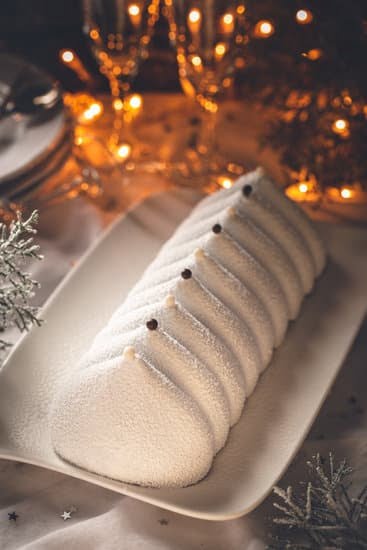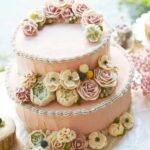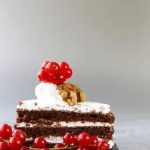Are you wondering how to make icing for cake decorating? Icing is a crucial element in the art of cake decorating, as it not only adds flavor but also serves as a smooth and beautiful canvas for intricate designs. In this article, we will explore the different types of icing, essential ingredients, step-by-step instructions for making buttercream icing from scratch, and tips for successful icing.
Icing is a sweet, creamy topping that is used to decorate cakes and other baked goods. It not only enhances the flavor of the cake but also provides a base for decorative elements such as piping, flowers, and designs. Understanding the different types of icing and their uses is essential for creating visually appealing and delicious desserts.
There are various types of icing, including buttercream, royal icing, and fondant, each with its own unique consistency and uses in cake decorating. Knowing which type of icing to use for different techniques and designs can greatly impact the overall appearance and taste of your finished cake. In the following sections, we will delve into the details of each type of icing and how to use them effectively in cake decorating.
Types of Icing
When it comes to cake decorating, choosing the right icing is crucial. The type of icing you use can greatly impact the overall look, taste, and texture of your cake. There are several different types of icing commonly used in cake decorating, each with its own unique characteristics and uses.
1. Buttercream: Buttercream is one of the most popular icings for cake decorating due to its creamy texture and delicious flavor. It is made from a mixture of butter, confectioner’s sugar, and flavorings such as vanilla or almond extract. Buttercream icing can be easily tinted with food coloring to create vibrant colors for decorating cakes and cupcakes.
2. Royal Icing: Royal icing is a hard-drying icing that is often used for intricate designs on cookies, gingerbread houses, and wedding cakes. It is made from egg whites or meringue powder, confectioner’s sugar, and a few drops of lemon juice or vinegar. Royal icing dries to a smooth, glossy finish which makes it perfect for detailed decorations.
3. Fondant: Fondant is a versatile type of icing that can be rolled out into sheets to cover cakes or molded into intricate shapes for decorating desserts. It has a smooth texture and creates a flawless finish on cakes. Fondant can be flavored and colored in various ways to complement the flavor of the cake.
These different types of icing offer a wide range of options for cake decorators and each has its own unique set of benefits and challenges when it comes to creating stunning dessert masterpieces.
Overall, understanding the differences between these three main types of icings – buttercream, royal icing, and fondant – will help you choose the right one for your specific cake decorating needs. Whether you’re looking for a creamy frosting for birthday cupcakes or an elegant covering for a wedding cake, knowing how to make them properly will enhance your baking skills immensely.
Essential Ingredients
When it comes to cake decorating, one of the most crucial elements is the icing. Icing not only adds flavor to the cake but also serves as a smooth and attractive surface for decorations. Different types of icing can be used depending on the desired result and the specific requirements of the cake. In this section, we will discuss the essential ingredients needed to make icing for cake decorating.
The key components for making icing include sugar, butter, flavorings, and other essential ingredients. Sugar is the primary component of most icing recipes, providing sweetness and structure to the mixture. Butter is another fundamental ingredient, adding richness and a creamy texture to the icing. Flavorings such as vanilla extract or almond extract are commonly used to enhance the taste of the icing.
In addition to these main ingredients, other components may be added to achieve a specific consistency or flavor. For example, meringue powder can be used in royal icing to give it a smooth and glossy finish, while corn syrup can be added to fondant for pliability and sheen. Understanding how these essential ingredients work together is crucial in creating the perfect icing for cake decorating.
To make sure you have all these essential ingredients ready at hand before starting your cake-decorating venture will save you from unnecessary anxiety or mid-way crises like running out of an important component while making your homemade masterpiece.
Step-by-Step Instructions
Buttercream icing is a versatile and delicious option for decorating cakes, cupcakes, and other pastries. It is relatively simple to make and can be flavored and colored in numerous ways to complement any baked goods. Below are detailed instructions on how to make buttercream icing from scratch.
Gather Your Ingredients
To make buttercream icing, you will need unsalted butter, confectioners’ sugar (also known as icing sugar), vanilla extract or another flavoring of your choice, and a small amount of milk or cream. Make sure the butter is at room temperature so that it blends easily with the other ingredients.
Cream the Butter
In a mixing bowl, beat the softened butter until it becomes light and fluffy. This step is crucial for achieving a smooth and creamy texture in your buttercream icing. Using an electric mixer can make this process much easier and quicker.
Incorporate Flavoring and Sugar
Once the butter is creamy, add the vanilla extract (or any other flavoring) and mix it in thoroughly. Gradually add the confectioners’ sugar to the mixture, beating well after each addition. If the icing seems too stiff, you can add small amounts of milk or cream until you reach your desired consistency.
These step-by-step instructions provide a basic outline for making buttercream icing from scratch. Once you have mastered this foundational recipe, you can experiment with different flavors, colors, and decorating techniques to create beautiful and delicious confections.
Tips for Successful Icing
When it comes to cake decorating, having the right icing can make all the difference. Whether you’re a beginner or an experienced baker, knowing how to troubleshoot common issues with icing can save you from potential disasters. From lumps in your buttercream to runny royal icing, here are some tips for successful icing that will help you achieve the perfect finish on your cakes.
One common issue when making icing is dealing with lumps in the mixture. Lumpy icing can be frustrating and affect the overall look of your cake. To avoid this, make sure that your butter or shortening is at room temperature before starting.
Creaming the butter or shortening thoroughly with the sugar and slowly adding small amounts of liquid can also help prevent lumps from forming. If lumps do appear, using a sieve or whisking vigorously can help smooth out the texture of your icing.
Another common problem is when your icing is too runny, making it difficult to work with and leaving you with messy results. If your icing is too thin, try adding more powdered sugar to thicken it up. For royal icing, adding a little bit of meringue powder or egg white can help stiffen the consistency. Additionally, allowing your icing to chill in the refrigerator for a short while can also help it firm up and become easier to work with.
A useful tip for maintaining smooth and consistent icing is to avoid overmixing or undermixing your ingredients. Overmixing can create air bubbles in the frosting, resulting in a less-than-desirable finish on your cake. On the other hand, undermixing may leave you with an uneven texture that’s not suitable for decorating. Finding the right balance between mixing and incorporating ingredients is crucial for achieving the perfect icing consistency.
| Common Issue | Troubleshooting Tip |
|---|---|
| Lumps in Icing | Cream butter or shortening thoroughly with sugar; Use a sieve or whisk to smooth out texture |
| Runny Icing | Add more powdered sugar; Add meringue powder or egg white; Chill in refrigerator to firm up |
| Overmixing/Undermixing | Finding balance between mixing and incorporating ingredients; Avoid creating air bubbles or uneven texture |
Adding Color and Flavors
After mastering the art of making icing, the next step in cake decorating is often adding color and flavors to your icing. This step can transform a simple cake into a stunning masterpiece, and it’s important to know the right techniques for tinting icing and incorporating different flavors.
Techniques for Tinting Icing
One of the most common ways to add flair to your cake is by tinting the icing with vibrant colors. There are several methods for achieving the perfect hue, including using gel food coloring or liquid food coloring.
Gel food coloring is concentrated and provides more intense colors without affecting the consistency of the icing. On the other hand, liquid food coloring can alter the consistency of the icing if too much is added, so it’s best to use sparingly.
Another technique for tinting icing is using natural ingredients such as fruit juices or purees for a subtle pastel shade. For example, adding raspberry puree can give your icing a soft pink color, while blueberry puree can create a light purple shade. Experiment with different natural ingredients to achieve unique colors that also impart delicious flavors to your icing.
Incorporating Different Flavors
In addition to adding color, incorporating different flavors into your icing can take your cake decorating skills to the next level. Extracts such as vanilla, almond, lemon, or peppermint can be added to buttercream or royal icing to enhance the taste and complement the flavor of the cake. For a more decadent touch, consider adding melted chocolate or cocoa powder to create chocolate-flavored icing that pairs perfectly with chocolate cakes.
Remember that when adding liquid flavorings such as extracts or fruit purees, it’s essential to adjust the consistency of your icing accordingly by adding more powdered sugar if needed. By mastering these techniques for tinting and flavoring your icing, you’ll be well on your way to creating beautifully decorated cakes that not only look amazing but also taste delicious.
Different Decorating Techniques
When it comes to cake decorating, the way you apply the icing can make a big difference in the overall appearance of the finished product. Here are some popular techniques for using icing to decorate cakes:
Piping
Piping is a classic cake decorating technique that involves using a piping bag and various tips to create different designs with icing. You can create intricate patterns, borders, flowers, and even written messages on cakes using this method. To achieve the best results when piping, it’s important to use the right consistency of icing – for detailed work, a stiff consistency is best, while a softer icing is better for filling in larger areas.
Flooding
Flooding is a technique commonly used with royal icing or fondant that involves covering an entire surface with a smooth layer of icing. This method is often used for creating smooth backgrounds or “flooding” cookies with a base color before adding details on top.
Other Methods
In addition to piping and flooding, there are many other creative ways to use icing to decorate cakes. Some decorators use stencils or templates to create specific designs, while others opt for freehand drawing with icing. Another popular method is using edible embellishments such as pearls, sprinkles, or edible glitter to add texture and sparkle to the finished cake.
Mastering these various decorating techniques can take time and practice but can elevate your cakes from basic desserts to works of art that will impress any crowd.
For more information on how to make additional types of decorative icings see our articles on “how to make frosting” as well as “how to make glaze”.
Icing Storage and Shelf Life
In conclusion, mastering the art of cake decorating begins with understanding the importance of icing. Whether it’s buttercream, royal icing, or fondant, the right type of icing can make or break a cake’s appearance and taste. By learning the essential ingredients and following step-by-step instructions, anyone can create smooth, delicious icing for their cakes.
One of the key factors in successful cake decorating is knowing how to store your icing properly and understanding its shelf life. By using airtight containers and keeping icing refrigerated, you can extend its longevity and ensure that it stays fresh for longer periods. Different types of icing have different shelf lives, so it’s important to be aware of these guidelines to avoid spoilage.
In addition to storage techniques, incorporating color and flavor into your icing brings an extra level of creativity to cake decorating. The ability to tint icing and enhance its flavor profile opens up endless possibilities for creating unique and visually stunning cakes. With practice and patience, anyone can master the art of making and using various types of icing for cake decorating.
Frequently Asked Questions
What Is the Best Icing to Use for Cake Decorating?
The best icing to use for cake decorating depends on the desired outcome. Buttercream is a popular choice due to its versatility and ability to hold intricate designs. Royal icing is great for creating detailed decorations and fondant provides a smooth, professional finish.
How to Make the Perfect Cake Icing?
Making the perfect cake icing requires attention to detail and precision. It’s important to start with the right consistency of butter or shortening, then gradually add powdered sugar and flavorings while monitoring the texture. Adjusting the consistency with liquid is key to achieving the perfect balance of smoothness and stability.
How Do You Make Frosting Better for Decorating?
To make frosting better for decorating, there are several techniques that can be used. Adding corn syrup or glycerin can improve the texture and workability of the frosting, making it smoother and more pliable for intricate designs. Additionally, using gel food coloring instead of liquid can help maintain the consistency of the frosting while adding vibrant color for decorating purposes.

Welcome to our cake decorating blog! My name is Destiny Flores, and I am the proud owner of a cake decorating business named Cake Karma. Our mission is to provide delicious, beautiful cakes for all occasions. We specialize in creating custom cakes that are tailored specifically to each customer’s individual needs and tastes.





